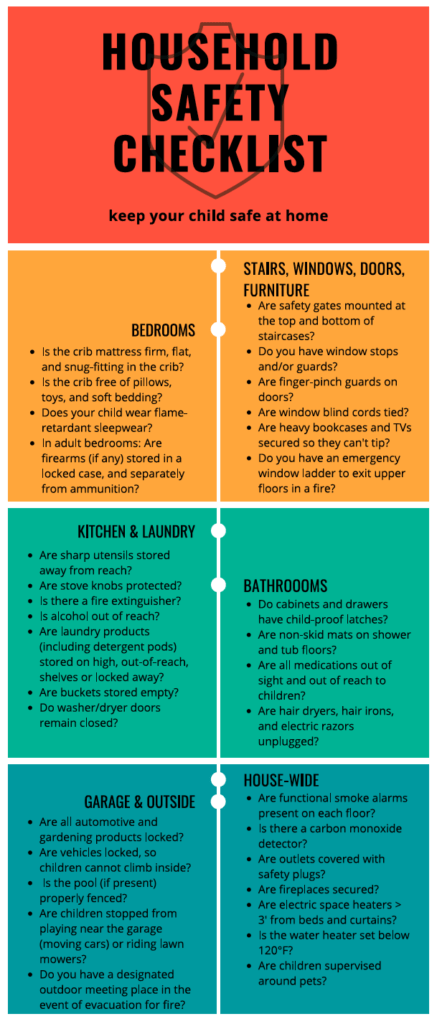By Santa J. Bartholomew M.D. FAAP, FCCM
Common Home Emergencies Include:
Drowning
Drowning accounts for 6,000 to 8,000 deaths in the United States and 450,000 worldwide. Most common drownings in the United States occur mostly in the backyard pool or in bodies of water close to the home. It frequently occurs in the summer months as one would expect and is more common in male children as many traumatic injuries. In young children drowning is usually secondary to inadequate supervision but in adolescents drowning events are usually associated with risk-taking behaviors such as diving in shallow pools causing severe spine injuries or hyperventilating before submersion for a high.
- Critical to good neurologic survival is bystander CPR at the scene by laypersons. Hypoxia is the main issue in drowning so anything to decrease this risk improves mortality.
- Submersions > 5 minutes usually portend poor prognosis
- Hypothermia has long been thought to be protective, especially if the child drowns in very cold water and body temperature falls rapidly.
- Return of spontaneous circulation in less than 10 minutes usually provides a favorable outcome.
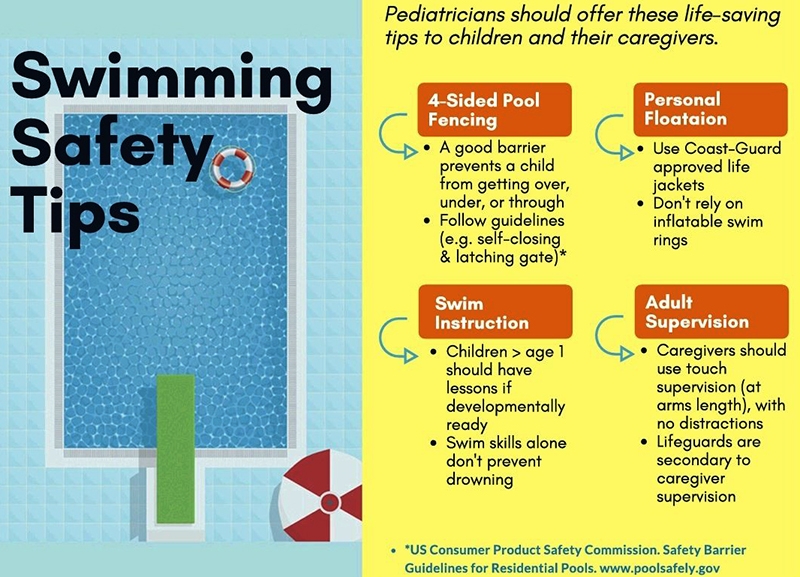
Suffocation
Suffocation is the leading cause of unintentional injury in deaths of children under 12 months. Despite massive efforts to educated about safe sleep environments for infants we continue to see 900-1000 deaths/annum of infants suffocated or strangled in bed clothing. Soft bedding like in an adult bed, co-sleeping and covering infants with blankets are among the most dangerous sleeping environments for infants and children up to a year old. Adults impaired by alcohol and/or drugs are also major hazards as they can overlay or wedge and infant into a corner without being aware of it because of their impaired state.
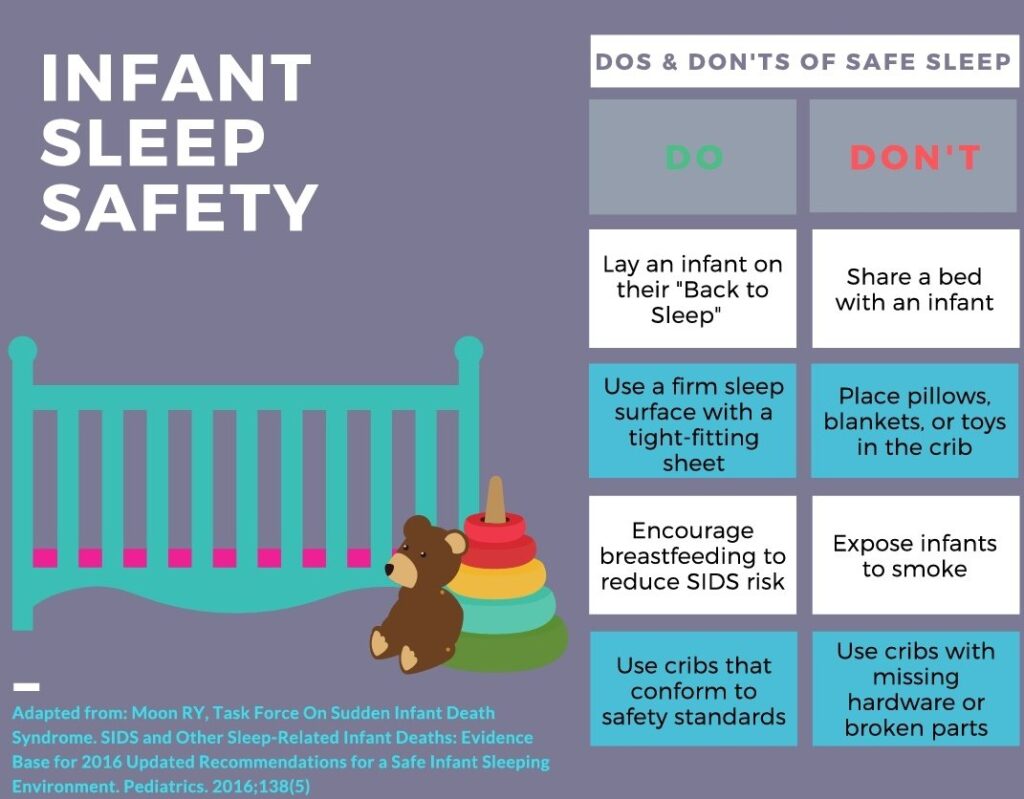
Ingestions
There are myriad dangerous substances in the home that can in ingested accidentally or intentionally by children of all different ages in the home: household cleaners, medications, lithium button batteries, magnets, toys, cosmetics. SAFE STORAGE IS KEY!!
Age and sex are the two main risk factors. Across all medications children <5 is at the highest risk given the explorative nature and curiosity of this age group. Boys account for most ingestions in the home. Locking up medications, corrosive cleaning supplies and laundry pods are the best method of preventing these injuries.
- Laundry Pods are brightly colored and look like candy but cause severe toxicity when ingested. They cause severe esophageal burns that can last a lifetime, pneumonitis, and central nervous system injury
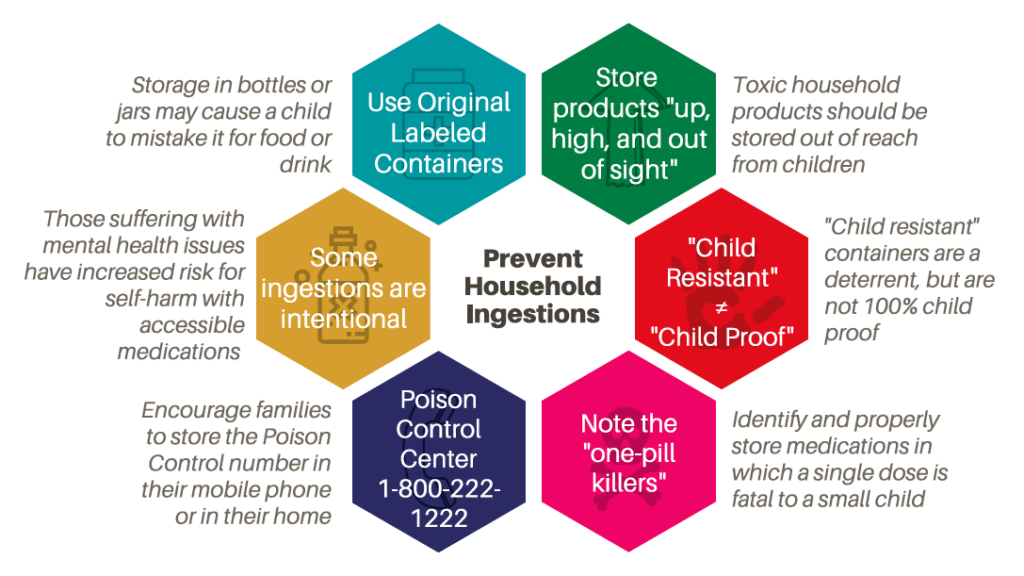
Burns
300 children/day visit emergency rooms for burn related injuries. Burns account for 16% of all hospitalizations for children less than 12 months old. Mortality is 0.4 to 2.8% among burned children, burns are the third most common cause of unintentional death in children 5 to 9 years old. Toddlers and preshool-age children sustain mostly scald burns, chemical burns, intraoral burns and electrical burns. Toddlers are higher risk of burn because of their mobility and curiosity. These types of burns in children that are not mobile are highly suspicious for non-accidental injury. In adolescents flame injuries are most common, boys more than girls because of risk taking behavior.
- Burn prevention centers on anticipating injuries and trying to prevent these for example scalds are usually hot liquids pulled from stove or spilled with child in arms. Placing children in play pen or other safe environment while cooking prevents such injuries.
- The key is adult supervision and attentiveness.
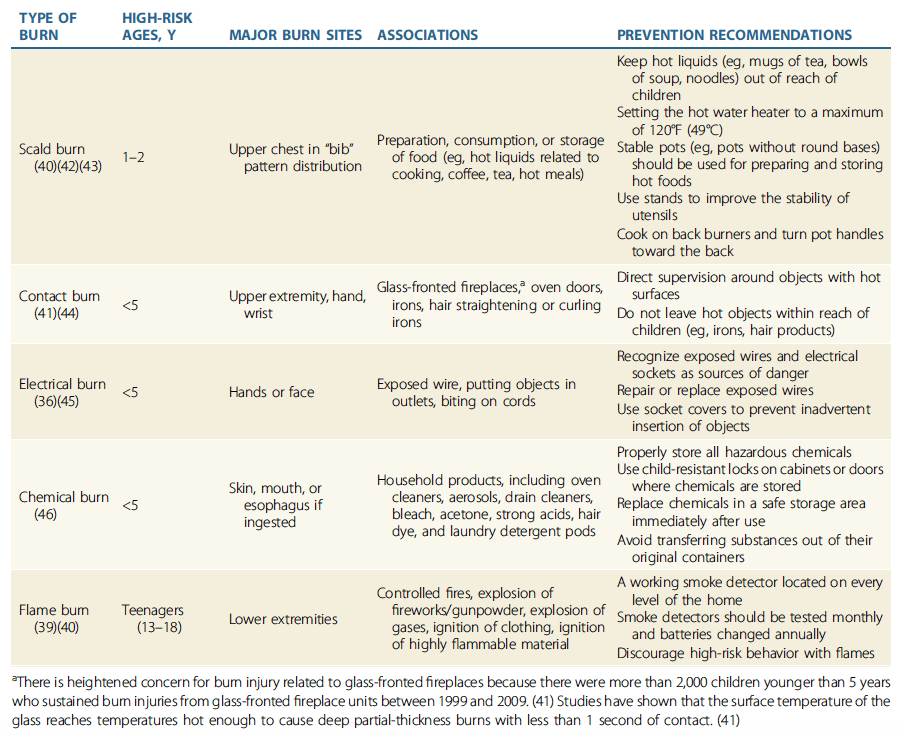
Firearms
Approximately 4000 children a year die from firearms in the home. This number has been rising in the last years. One half the homes in America have at least one gun in their home and about 1 in 10 families admit to having loaded and unlocked guns in their home. Five percent of children in the United States have witnessed a shooting in the past year.
- Children most at risk for a firearm injury are males or adolescent age, minority ethnicity, and mental illness and mental illness in conjunction with alcohol or drug abuse.
- Deaths of young children with a firearm are more likely related to intimate partner violence and more likely shot as innocent bystander in domestic conflicts.
- Prevention of gun related injury requires firearms to be always locked and unloaded. Ammunition kept separate from the firearm. Counseling parents about safe gun storage.
Falls
Education is the key to preventing falls in the home. For instance, preventing infants 0-6 months from falling requires not placing these infants in situations where they can fall: placing the car seat or bouncy seat on the table, placing an infant on the couch. Starting at the age when children become mobile (around 9 months) then preventing falls down stairs and from windows or decks requires acute attention to detail: placing safety gates, furniture corner covers, window safety devices and avoiding infant walkers.
Source Article: Accidents Waiting to Happen: A Review of Unintentional Household Injuries in Children Erin P. O’Donnell, MD,* Therese L. Canares, MD* *Department of Pediatrics, Division of Pediatric Emergency Medicine, Johns Hopkins University School of Medicine, Baltimore, MD
